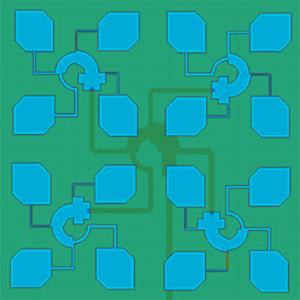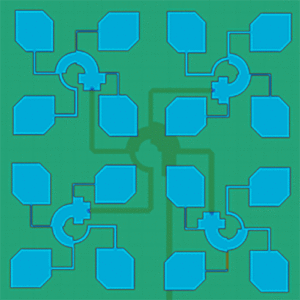Radiobot 1.0 Cognitive Communications Technology
Wideband Autonomous Cognitive Radios (WACRs) are spectrum-agile, multi-band, multi-mode radios that autonomously transform their communications mode in response to the perceived state of the spectrum, network, radio and the user needs. Bluecom Systems’ Radiobot 1.0 Cognitive Engine is a technology solution for realizing such advanced cognitive radio communications with OTS software-defined radios (SDRs) in a wide-range of application scenarios including space, satellite, military and emergency communications.
Radiobot 1.0 achieves this capability thanks to Bluecom Systems’ advanced spectrum knowledge acquisition algorithms and cognitive communications protocols based on Artificial Intelligence (AI), Machine/Deep Learning (ML/DL), cognitive wireless communications protocols and advanced signal processing techniques. Current Radiobot 1.0 Cognitive Engine implementations are available to support:

Spectrum-agile Cognitive Dynamic Spectrum Sharing for Interference-avoidance and Anti-Jamming:
The Bluecom cognitive dynamic spectrum sharing protocol suite allows autonomous mobile radio networks to learn the RF environment to seamlessly respond to both RF threats and interference while optimally utilizing the available spectrum and radio resources. The protocol software suite can be customized for various processor and SDR platforms

Cognitive Cooperative Communications:
Bluecom’s cognitive cooperative relaying technology leverages cooperation among network nodes to successfully deliver distributed data to destination sinks in mobile networks within QoS and delay constraints. The Bluecom cognitive cooperative communications protocol suite can be customized for various processor and radio platforms.

Real-time Spectrum Situational Awareness:
Bluecom Systems’ Hierarchical Spectrum Situational Awareness (HSSA) technology is a Radiobot Cognitive Engine implementation tailored to provide real-time wideband RF situational awareness. The HSSA tool allows real-time modification of Signals-of-Interest definitions and rapid and robust identification of complex mixtures of signal types
